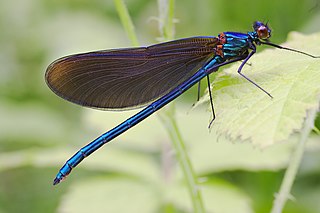
Hemiphlebia mirabilis, commonly known as the ancient greenling, is a species of damselfly in the family Hemiphlebiidae. It is very small with a long, metallic-green body and clear wings. It is endemic to south-eastern Australia. Its natural swamp habitat is threatened by habitat loss.

Austroargiolestes is a genus of damselflies in the subfamily Argiolestinae of the family Megapodagrionidae. They are commonly known as Flatwings; unlike many other damselflies, at rest their wings are spread out flat.
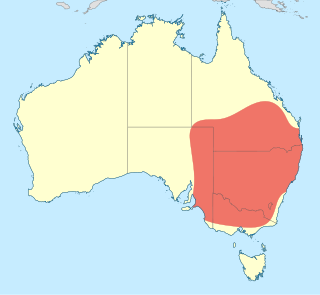
Austrogomphus australis, also known as Austrogomphus (Austrogomphus) australis, is a species of dragonfly of the family Gomphidae, commonly known as the inland hunter. It is widespread and common, inhabiting rivers and pools in inland eastern Australia.
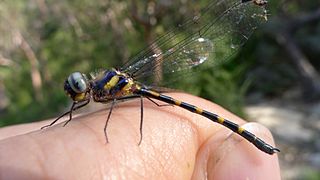
Cordulephya is a genus of dragonflies in the family Cordulephyidae, endemic to eastern Australia. The species are small to tiny in size, coloured black, or purplish-black, with yellowish markings. Unusually for Anisoptera, these dragonflies rest with their wings folded above their body in a similar manner to many species of damselfly. They are commonly known as shutwings.

Cordulephya pygmaea is a species of dragonfly of the family Cordulephyidae, also known as the common shutwing. It inhabits streams in eastern Australia. It is small to tiny in size, coloured black, or purplish-black, with yellowish markings. It rests with its wings folded above its body in a similar manner to a damselfly.
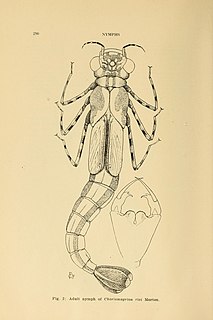
Chorismagrion is a monotypic genus of damselflies belonging to the family Synlestidae. The single species of this genus, Chorismagrion risi, known as a pretty relict, is a slender, medium-sized damselfly, mostly black in colour with white markings. It is endemic to north-eastern Australia, where it inhabits streams and large pools in rainforests.

Synlestes is a genus of damselflies in the family Synlestidae. Species of Synlestes are very large damselflies, metallic green to dark bronze or black in colour with white, yellow or orange markings. Unlike many other damselflies, they spread their wings when resting. They are endemic to eastern Australia where they inhabit streams.
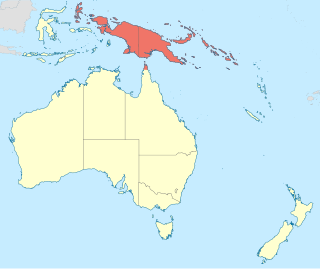
Rhinocypha tincta is a species of damselfly in the family Chlorocyphidae, commonly known as a Papuan jewel. It is a medium-sized damselfly with a short stout body, it is black with blue markings, and has long dark wings with pterostigma. It has been recorded from South-east Asia, New Guinea and the Solomon Islands in the Pacific, where it inhabits streams.

Austroagrion exclamationis is a species of damselfly in the family Coenagrionidae, commonly known as a northern billabongfly. It is a small damselfly; the male is blue and black. It has been recorded from New Guinea and northern Australia, where it inhabits streams and still water.
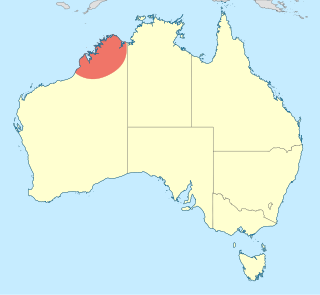
Austrocnemis obscura is a species of damselfly in the family Coenagrionidae, commonly known as a Kimberley longlegs. It is a tiny damselfly, bronze-black in colour with very long legs. It has only been recorded from the Kimberley region of Western Australia, where it inhabits streams and slow-moving water.
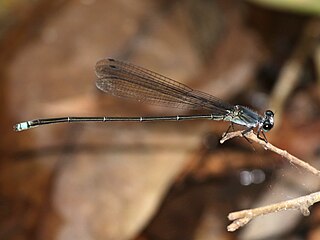
Pseudagrion jedda is a species of damselfly in the family Coenagrionidae, commonly known as a dusky riverdamsel. It is a large, dull and darkly coloured damselfly, found in northern Australia, where it inhabits streams and lagoons.

Eurysticta kununurra is a species of damselfly in the family Isostictidae, commonly known as a Kimberley pin. It has been recorded in the Kimberley region in Western Australia, where it inhabits rivers.
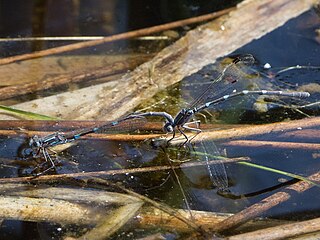
Austrolestes io is an Australian species of damselfly in the family Lestidae, commonly known as an iota ringtail. It has been found in both south-western Australia as well as south-eastern Australia where it inhabits pools, lakes and ponds.
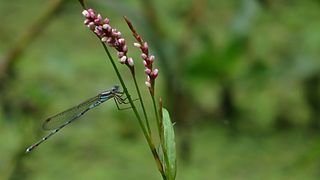
Austrolestes leda is an Australian species of damselfly in the family Lestidae, commonly known as a wandering ringtail. It is found across eastern Australia where it inhabits slow and still water.
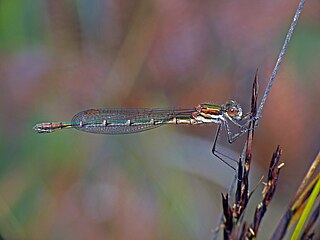
Austrolestes psyche is an Australian species of damselfly in the family Lestidae, commonly known as a cup ringtail. It is found in south-eastern Australia where it inhabits pools, lakes and swamps.

Diphlebia lestoides is a species of Australian damselfly in the family Lestoideidae, commonly known as a whitewater rockmaster. It is endemic to south-eastern Australia, where it inhabits streams and rivers.

Lestoidea barbarae is a species of Australian damselfly in the family Lestoideidae, commonly known as a large bluestreak. It has only been recorded from the vicinity of Wooroonooran National Park, in north-east Queensland, where it inhabits streams in rainforest.

Griseargiolestes griseus is a species of Australian damselfly in the family Megapodagrionidae, commonly known as a grey flatwing. It is endemic to south-eastern New South Wales, where it inhabits bogs and seepages near small streams.

Episynlestes intermedius is a species of Australian damselfly in the family Synlestidae, commonly known as an intermediate whitetip. It is endemic to the Eungella area of Queensland, where it inhabits streams.

Synlestes weyersii is a species of Australian damselfly in the family Synlestidae, commonly known as a bronze needle. It is endemic to south-eastern Australia, where it inhabits streams and rivers.



